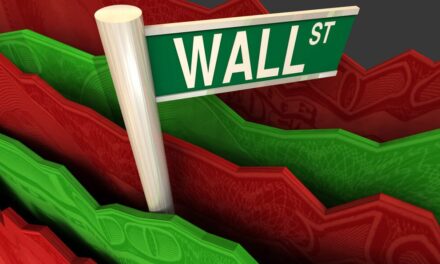During an election year the S&P 500 peaks today (Sept 21) and bottoms the last week of October.
The calendar very well could be the biggest issue if you are bullish right now. pic.twitter.com/QARx39vENl
— Ryan Detrick, CMT (@RyanDetrick) September 21, 2020
If history is any guide, the S&P 500 might be in for a rough ride going into November’s election.
Chartered Market Technician Ryan Detrick ran the numbers back to 1950 and found that the market tops out around September 21 in election years and bottoms out in the last week of October.
Now, before we go any further, I have to throw out some major caveats.
To start, there have only been 17 presidential elections since 1950, including this year’s election. That isn’t enough data to draw firm conclusions. This might just be statistical noise.
And averages are averages. They don’t necessarily tell you anything about a single year. If you put your head in an oven and your feet in a freezer, you might feel “average.” But you’d have third degree burns on your face and frostbite on your toes.
That said, it’s worth noting that the market followed this basic pattern in 2016 and something pretty close to it in 2012. And even the 2008 cycle — which corresponded to the global financial crisis — wasn’t too far off. Stocks were in freefall from mid-September to mid-November before limping higher to close out the year.
So, Detrick might be on to something here.
Market technicians look for patterns. But they don’t attempt to answer the question “Why?” That’s not their focus.
And the beauty of technical analysis is that the underlying reasons don’t necessarily matter. Prices rise when there are more buyers than sellers, and prices fall when there are more sellers than buyers. It’s as simple as that.
But just for giggles, let’s speculate on this market trend during election years.
Could it be that pre-election angst causes investors to lose their mojo?
Maybe.
If you’re a conservative institutional manager, you might feel it’s prudent to take some money off the table going into the uncertainty of an election.
But I think there’s something more fundamental here.
Election Years: A More Extreme Seasonal Trend
To start, the pattern in election years is in line with the normal seasonal patterns.
You’ve heard the old maxim to “sell in May and go away.” Stocks tend to perform best between November and April and underperform during the May to October stretch.
Furthermore, September can be a real doozy of a month even in nonelection years. Yardeni Research crunched the numbers and found that September is, on average, the worst-performing month. Between 1928 and 2019, the S&P 500 lost 1% on average. Every other month had a positive or flat return over time.
And September and October both tend to have more downside than upside. In years where the months are positive, the S&P 500 returns 3.2% and 4.1%, respectively.
But in years where the months are down, the losses were 4.6% and 4.7%, respectively.
Some of the worst market crashes happen around this time of year. The 1929 crash started in September, leading to the “Black Monday” collapse on October 28. Likewise, the 1987 crash — the “other” Black Monday — happened on October 19.
The 2008 crisis was more of a long slog. It got going in September and dragged on for months. But the collapse of Lehman Brothers on September 15 was when it got nasty.
So, election-year performance can be described as a more extreme version of normal seasonal patterns.
But why do we have seasonal patterns in the first place?
No one really knows. Many traders go on vacation during the summer months, which explains lower trading volume in June, July and August. But there’s no real explanation for why September and October are rough months.
At any rate, this year seems to be holding the basic pattern of election years. We’ve witnessed four straight weeks of losses after a strong recovery through the summer.
So, while we should take all of these figures with a large grain of salt, it might be smart to sit tight and not make any major portfolio additions for at least another few weeks.
Money & Markets contributor Charles Sizemore specializes in income and retirement topics. Charles is a regular on The Bull & The Bear podcast. He is also a frequent guest on CNBC, Bloomberg and Fox Business.
Follow Charles on Twitter @CharlesSizemore.





